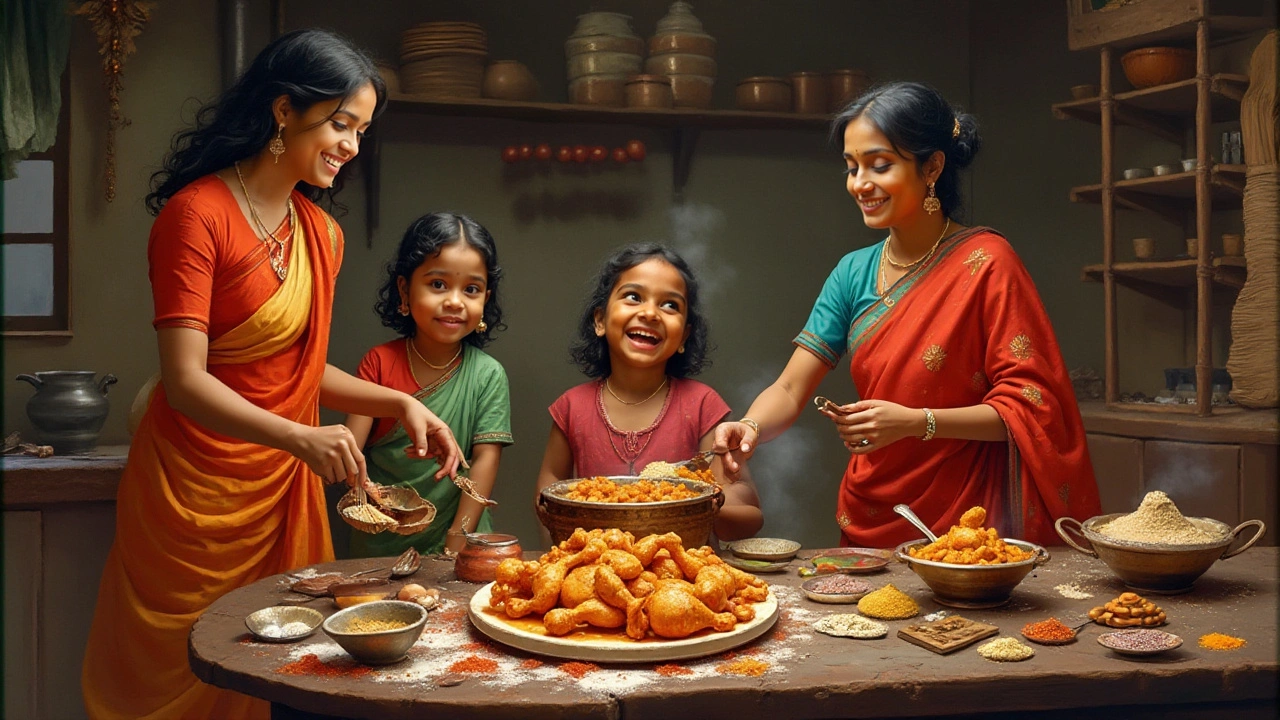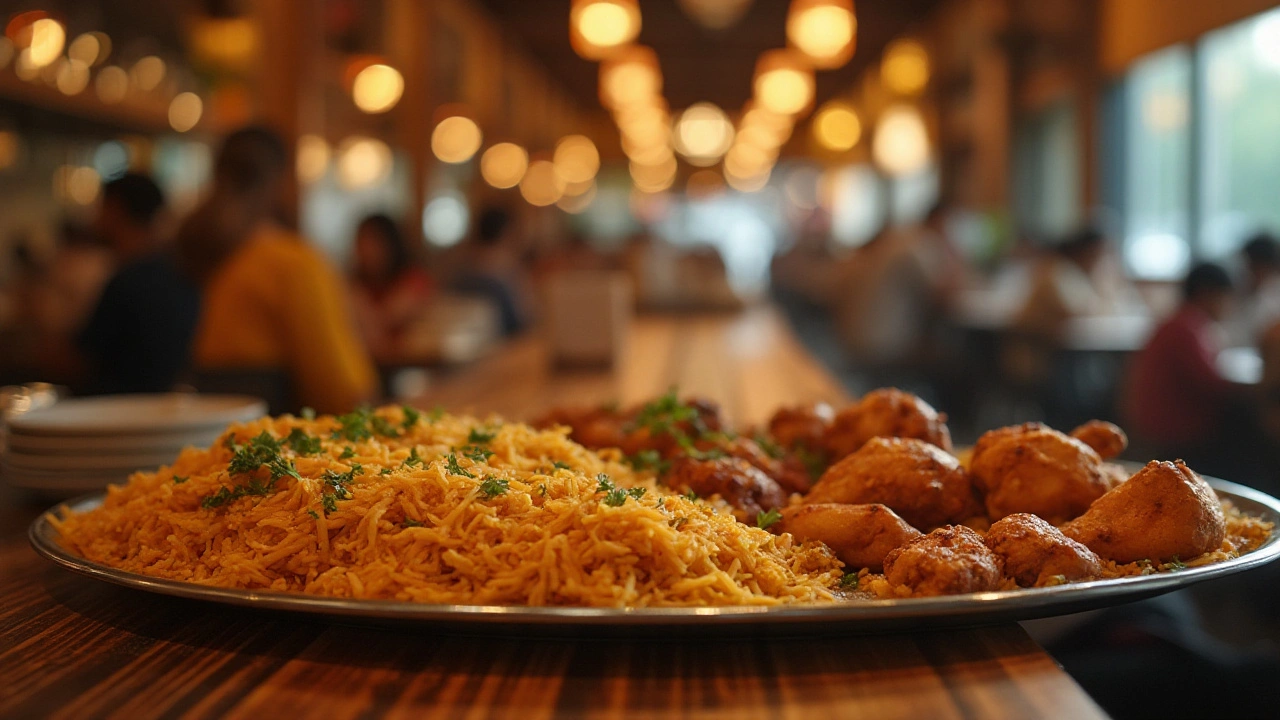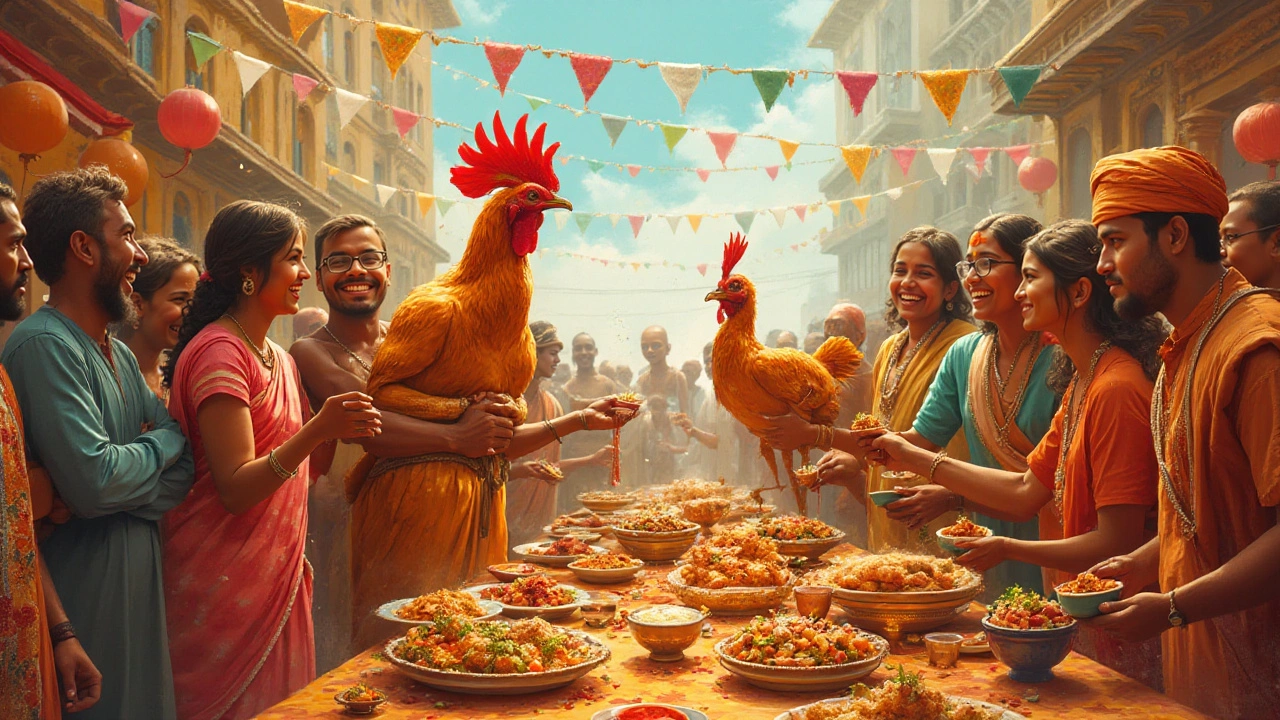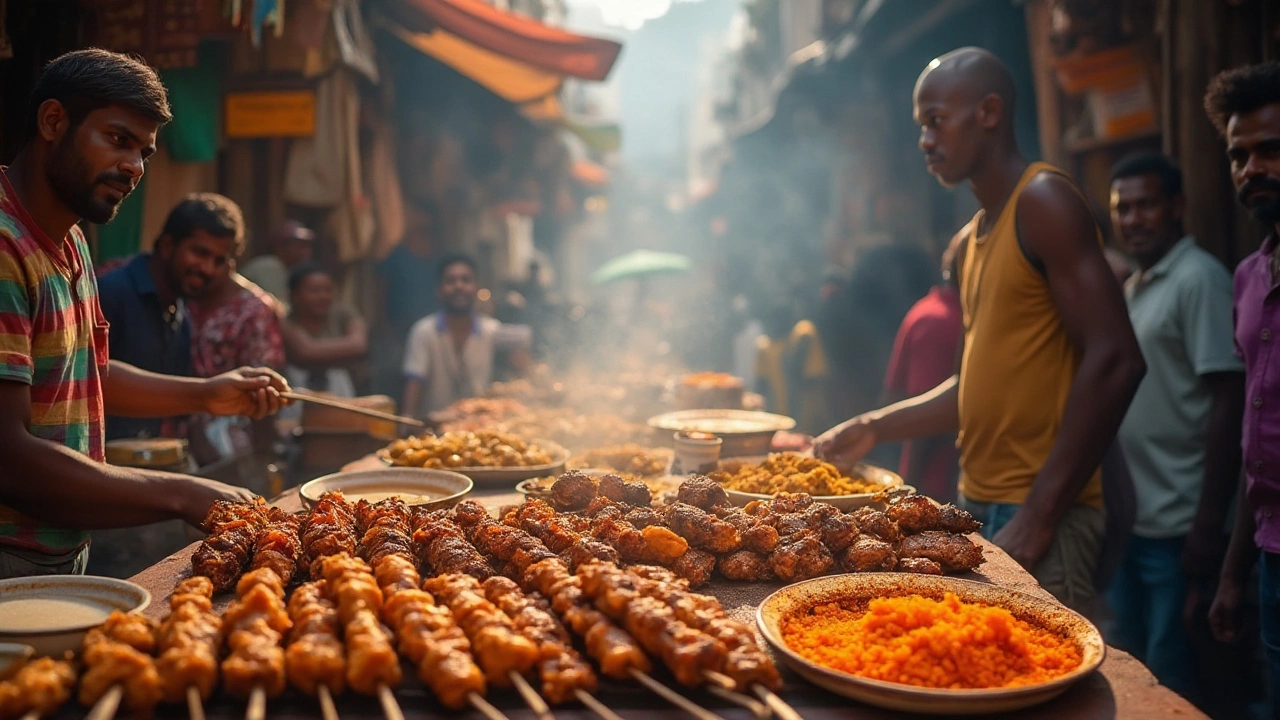Across the globe, meats play a diverse role in dietary habits influenced by culture, religion, and geography. Among all options, one particular meat has gained increasing popularity, transcending borders and becoming a global staple. This meat, often found sizzling in street markets and served in elegant dishes worldwide, is cherished for its versatility and taste.
Embarking on a cultural journey to India, a land of rich culinary heritage, offers fascinating insights into traditional vegetarian and non-vegetarian practices. Understand how Indian cuisine, shaped by regional variations and religious beliefs, contributes to the broader narrative of meat consumption around the globe. Not only does this journey offer delectable experiences, but it also highlights the prominence of chicken, which reigns supreme as the world's most eaten meat.
Explore how chicken's adaptability has carved a significant place in Indian menus and how this trend influences culinary tourism, inviting curious gourmands and adventurers alike to savor India's flavorful offerings. Let this be an invitation to explore not just the tastes but the stories and traditions that make every bite a journey in itself.
- Global Preferences in Meat Consumption
- Culinary Traditions in India
- The Rise of Chicken as a Global Favorite
- Cultural Tourism and Indian Cuisine
Global Preferences in Meat Consumption
The world is a vast mosaic of culinary preferences, and when it comes to meat consumption, these preferences are intriguingly varied and complex. As we peel back the layers of dietary choices across countries and cultures, we find that chicken emerges as a universally celebrated staple, adored for its adaptability to countless flavors and preparation techniques. The prominence of chicken in the menu of many nations signals not just a culinary choice but a cultural message of acceptance and adaptability. Historical data often shows that chicken consumption has surged due to economic and health-related reasons. It’s not uncommon to find it being chosen over red meats because of perceived benefits like lean protein content and lower cholesterol levels.
Countries like the United States lead in per capita chicken consumption, where the average person consumes upwards of 40 kilograms a year. This trend mirrors itself in other western countries as well, each adapting chicken to their local cuisine in innovative ways. This adaptable nature also positions chicken as a crucial component of global diets aiming for sustainable living due to its lower environmental impact compared to beef or pork production. In China, the demand for chicken is growing rapidly, driven by a burgeoning middle class and a diet that is gradually shifting from plant-based staples to more protein-rich sources. Similarly, in African nations, chicken's affordability and simplicity in preparation have made it an increasingly popular choice.
The Global Shift
Understanding these distinctive preferences requires more than just data. It takes into account intricate factors including socio-economic developments, population growth, and food processing advances. Countries rich in culinary history like India witness a unique trend where chicken has slowly found its space amidst a traditionally vegetarian majority. Its rise is often linked to urbanization and changing lifestyles which call for quicker, more convenient meal choices. Unlike red meats, chicken enjoys a particular social acceptability across diverse religious and cultural contexts, prompting its global appeal. The rapid globalization of food cultures through international travel and media contributes significantly to the exchange of culinary influences, thus bolstering chicken's reputation.
According to a study by the Food and Agriculture Organization, meat consumption internationally is expected to grow by 12% in the next decade, with chicken being the driving force behind this expansion. This highlights the strategic importance of chicken in addressing global nutritional needs.
The world’s preference for certain types of meat also swings with the pendulum of dietary trends. As more individuals lean towards balanced diets and weight management, protein-rich foods like chicken become pivotal in traditional diets even where they previously might not have played a significant role. The non-limiting aspect of chicken consumption across cultural and religious lines ensures it a relentless climb in the charts of food preference. With endless culinary possibilities, from spicy Indian curries to American fried chicken staples, chicken thrives at the heart of the world's dining tables, proving its versatility and universal appeal.

Culinary Traditions in India
India's culinary traditions are as diverse as its landscape, stretching from the snow-capped Himalayas in the north to the tropical beaches of the south. This depth of variety comes not only from geography but from a tapestry of cultural influences and historical conquests that have left their imprint on the nation’s kitchens. Many flavors and cooking techniques found around the country are a testament to centuries of trading spices, migration, and blending of cusine. At the heart of this diversity is the steadfast adherence to dietary customs rooted in religious and community norms, which often dictate what is consumed in different regions. Hinduism, the predominant faith, generally promotes vegetarianism, considering cows sacred and certain other meats taboo. However, with India's vast expanse, these guidelines twist and turn into a myriad of delicious culinary practices.
In places like Kerala and Goa, coastal regions are famed for their brilliantly spiced seafood curries, owing much to their oceanic bounty. The usage of coconut, whether in milk, oil, or grated form, is widespread, lending a distinctive silkiness and essence that defines the flavor profile of many dishes. These practices contrast with the Punjabi cuisine of the north, renowned for its tandoori specialties and robust meat dishes like lamb rogan josh, reflecting the Indo-Persian history of the Mughals. Such diversity is not confined to meat dishes alone; the influence is seen across biryanis, breads, and even in everyday staples like dal and rice.
"Indian food is like classical music raga—there are many recipes to follow, but for the best results, you should make it your own," noted Madhur Jaffrey, acclaimed culinary author.
Beyond religious beliefs, economic factors also play a pivotal role in shaping meat consumption in India. Chicken, for instance, has grown massively in popularity, for it is not just affordable but versatile in cooking. It marries well with varied spices and preparation styles and aligns conveniently with modern dietary shifts towards leaner meats. This is mirrored by a global trend, underscoring culinary tourism's drawing power, where travelers eagerly immerse themselves in India's vibrant food culture, seeking both the exotic and the familiar. As food enthusiasts journey through bustling markets and cozy dhabas, they are greeted with an aroma that tells a story of heritage, adaptation, and a love for flavor that transcends time and borders.
As one samples the vibrant palette of Indian cuisine, it's clear that the nation's love affair with food reflects broader global consumption trends, yet remains uniquely, unmistakably Indian. Whether it's the aforementioned seafood curries, the vegetarian thalis, or the piquant chicken tikka masalas, there's an undeniable allure that captivates both those who set foot on Indian soil and those tasting a slice of India abroad. It is this rich tapestry of culinary traditions that India offers, providing a captivating lens through which the world views the art of eating.

The Rise of Chicken as a Global Favorite
Chicken has soared to the top of global meat preferences, captivating taste buds with its adaptability and nutritional value. Not just limited to one part of the world, chicken has woven itself into the culinary fabric of multiple cultures. The bird’s malleability allows it to be prepared in a myriad of ways—from skewered kebabs to wholesome roasts, or simmered into rich curries. This versatility transcends culinary boundaries, making it a preferred choice for cooks ranging from master chefs to home enthusiasts. The prevalence of chicken in global diets is closely tied to its economic efficiency as well. It requires less feed compared to larger livestock like cattle and pigs, making it an affordable protein source for the masses. This efficiency aligns with a growing global consciousness about resource utilization and sustainability. Therefore, as appetites grow but resources shrink, chicken stands out as a sustainable choice.
In exploring why chicken is the world's most popular meat, it's essential to recognize its broad appeal that balances taste, health, and economy. The nutrient profile of chicken, especially its high-protein and low-fat content, aligns with contemporary dietary trends which favor balanced and health-conscious eating. In a 2022 study by the Food and Agriculture Organization, chicken meat consumption was reported to surpass pork for the first time, highlighting a significant shift in global eating patterns. Its appeal isn't restricted to the palates of the Western world but extends to Asia, Africa, and beyond, finding unique local expressions in each region. This universal acceptability is partly due to very few religious and cultural taboos associated with chicken, unlike beef or pork, which face restrictions in countries across Asia and the Middle East.
The convenience factor cannot be overlooked either. In bustling urban centers worldwide, the quick cooking times of chicken dishes cater to busy lifestyles where time is often scarce. The availability of chicken in various forms—fresh, frozen, pre-cooked, or processed—facilitates easy access and caters to diverse consumer needs. This adaptability is perhaps its greatest asset, allowing it to seamlessly integrate into street food stalls, eateries, and high-end restaurants alike. According to a report in the Journal of Food Distribution Research, chicken's dominance in global meat consumption can be attributed to its burgeoning demand in developing regions, where increasing urbanization and incomes spur dietary shifts towards more animal proteins.
"Chicken plays a crucial role in many dietary customs worldwide due to its affordability, versatility, and acceptance across different cultures," notes culinary historian Jessica Harris, highlighting its integral place not just on our plates, but in our societies.
Beyond chicken's practical advantages, there's a cultural phenomenon where chicken dishes often become emblems of national identity. In India, for instance, chicken tikka masala represents a harmonious blend of Indian spices and British culinary traditions, creating a dish that resonates with global audiences. The rise of chicken is not just a tale of economic prudence or culinary flexibility but exemplifies how food can be a powerful unifying force, bridging cultural divides while catering to both the globe's craving for taste and need for nourishment. Its reigning popularity is a testament to chicken's longstanding presence in human history and its promising future on our dining tables.

Cultural Tourism and Indian Cuisine
India, known for its vivid tapestry of cultures, languages, and traditions, also boasts a culinary diversity that is as expansive as it is inviting. When exploring the subcontinent, it's impossible not to be swept away by the vibrant and aromatic experience that is Indian cuisine. The country's culinary landscape is a mosaic of regional flavors and styles, deeply rooted in history and tradition. From the fiery curries of the south to the milder, creamy delicacies of the north, every region on the Indian map offers a unique gastronomic adventure.
For those who embark on culinary tourism in India, the journey is one of discovery and delight. The art of Indian cooking is intertwined with the religious and cultural practices of its people. Consider the significance of vegetarianism in areas heavily influenced by Hinduism and Jainism, where meat consumption is minimal or non-existent. In contrast, the northern states, influenced by centuries of Mughal rule, feature rich, meat-based dishes like biryanis and kebabs. This diversity makes India a haven for cultural tourists looking to savor authentic experiences with each meal.
The gastronomic endeavors often extend beyond mere consumption; they involve engaging with the local populace, learning the intricate ways and customs of a culture preserved through food. Culinary courses or cooking classes in homestays are increasingly popular, especially among tourists eager to master the art of Indian cuisine. As stated by the Ministry of Tourism, "The food of India forms an integral part of its identity and is a significant attraction for tourists."
"The true character of a society is revealed in how it eats," observed celebrated Indian chef, Sanjeev Kapoor. His words hold true as food offers a lens through which cultural nuances can be appreciated.
Moreover, the rise of chicken as a global favorite seamlessly integrates into the Indian culinary context. Dishes such as butter chicken and chicken tikka are not only staples in Indian households but have also captured international palates. This affinity further strengthens India's position in cultural tourism, as travelers embark on an exquisite adventure to discover why chicken continues to reign supreme. Culinary tourism thus becomes a delightful pathway to understanding the stories of peoples and cultures through the sensory pleasures of food.
